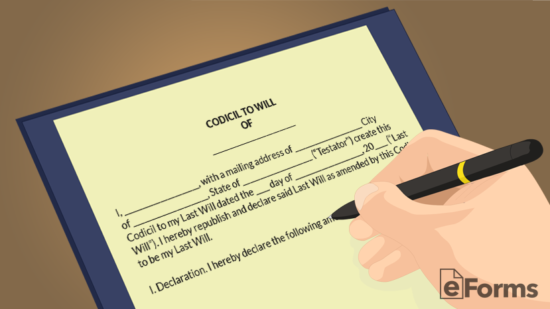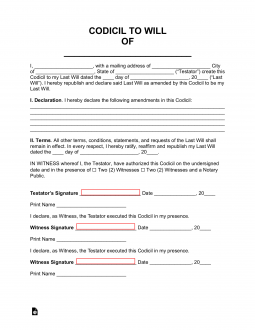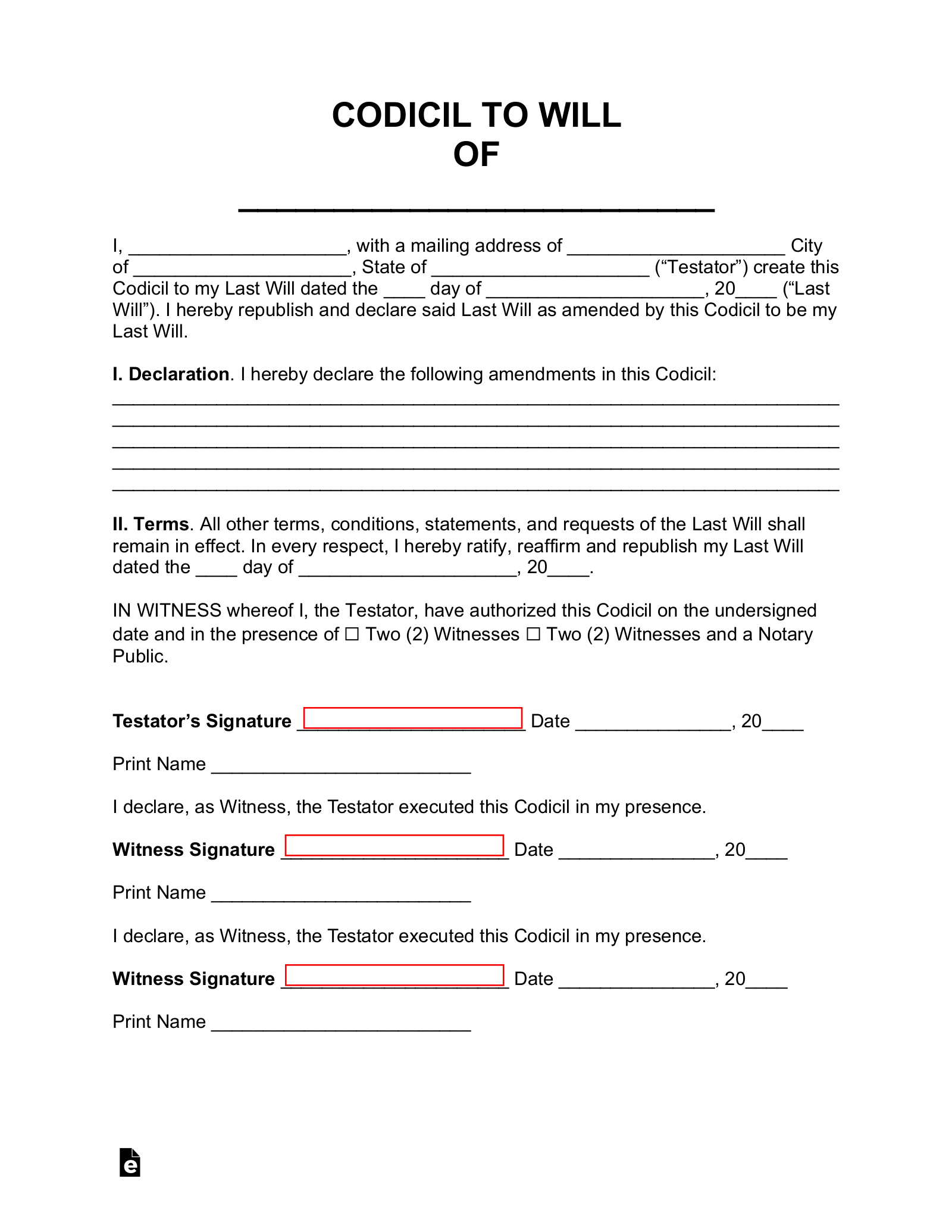Updated January 24, 2024
A codicil to will is a document used to amend a last will and testament. Instead of rewriting their will, individuals can attach a codicil to make simple updates or modifications. It is commonly used to reflect family changes or minor modifications to one’s estate.
Requirements for a Legally Binding Codicil
- States the date of the most recent version of the will
- Meets the signing requirements for a last will and testament
- Accompanied by a self-proving affidavit (optional)
Table of Contents |
When to Use
While a codicil can be used to change any part of a will, testators should be careful to avoid creating confusion. If the changes are complex, likely to be contested, or there is already a codicil in place, replacing the will is often a better option.
A legally sound codicil may suffice for simple changes like adding or removing a beneficiary, adjusting property or assets, changing the executor, or reflecting a name change.
How to Amend a Will (5 Steps)
1. Find the Latest Version of the Will

Begin by finding and reviewing the current version of the last will and testament. The date it was made effective, along with any sections that are being changed, will need to be referenced in the codicil.
2. Decide the Changes

With a codicil, anything can be amended in the will. Examples include the personal representative, executor, beneficiaries, or any other part of the estate transfer. Make a note of the specific sections and language that need to be changed.
3. Write the Codicil

Download: PDF, MS Word, or OpenDocument
The structure of the codicil form is straightforward. Be sure to include the following information:
- Testator’s Name and Address
- Will Creation Date
- Declaration (changes to the will)
4. Sign the Codicil

All states require two disinterested witnesses to sign the codicil. In Colorado, a notary signature can be substituted for the two witnesses.[1] Louisiana requires two witnesses and a notary.[2]
If the testator wishes to create an additional layer of protection, they can elect to include a notarized self-proving affidavit in which the witnesses state under oath that they watched the testator sign the document.
5. Attach to the Will

The last step is to attach the codicil to the will and distribute the estate plan to family members or beneficiaries who were mentioned, along with the testator’s personal attorney or representative. The will and codicil become one single instrument.
Sample Codicil to Will
CODICIL TO WILL
OF
_________________________
I, [NAME], with a mailing address of [ADDRESS] City of [CITY], State of [STATE] (“Testator”) create this Codicil to my Last Will dated the [DAY] day of [MONTH], 20[YEAR] (“Last Will”). I hereby republish and declare said Last Will as amended by this Codicil to be my Last Will.
I. Declaration. I hereby declare the following amendments in this Codicil: [LIST AMENDMENTS]
II. Terms. All other terms, conditions, statements, and requests of the Last Will shall remain in effect. In every respect, I hereby ratify, reaffirm, and republish my Last Will dated the [DAY] day of [MONTH], 20 [YEAR].
IN WITNESS whereof I, the Testator, have authorized this Codicil on the undersigned date and in the presence of ☐ two Witnesses ☐ two Witnesses and a Notary Public.
Testator’s Signature ______________________ Date _______________, 20____
Print Name _________________________
I declare, as Witness, the Testator executed this Codicil in my presence.
Witness Signature ______________________ Date _______________, 20____
Print Name _________________________
I declare, as Witness, the Testator executed this Codicil in my presence.
Witness Signature ______________________ Date _______________, 20____
Print Name _________________________
Frequently Asked Questions
Does a codicil to will have to be notarized?
The legal requirements for signing a codicil to will are the same as those for signing a last will and testament. Most states do not require notary acknowledgment, but some testators may choose to involve a notary for extra security.
Can a codicil be used to change the executor?
A codicil can be used to revoke, modify, or add any specific provisions in a will so long as the changes are stated clearly and the document is executed properly.
How do you add a codicil to a will?
Once the codicil is completed and signed, simply attach the document to the latest version of the last will and testament. Be sure to distribute electronic and physcial copies to all interested parties.


